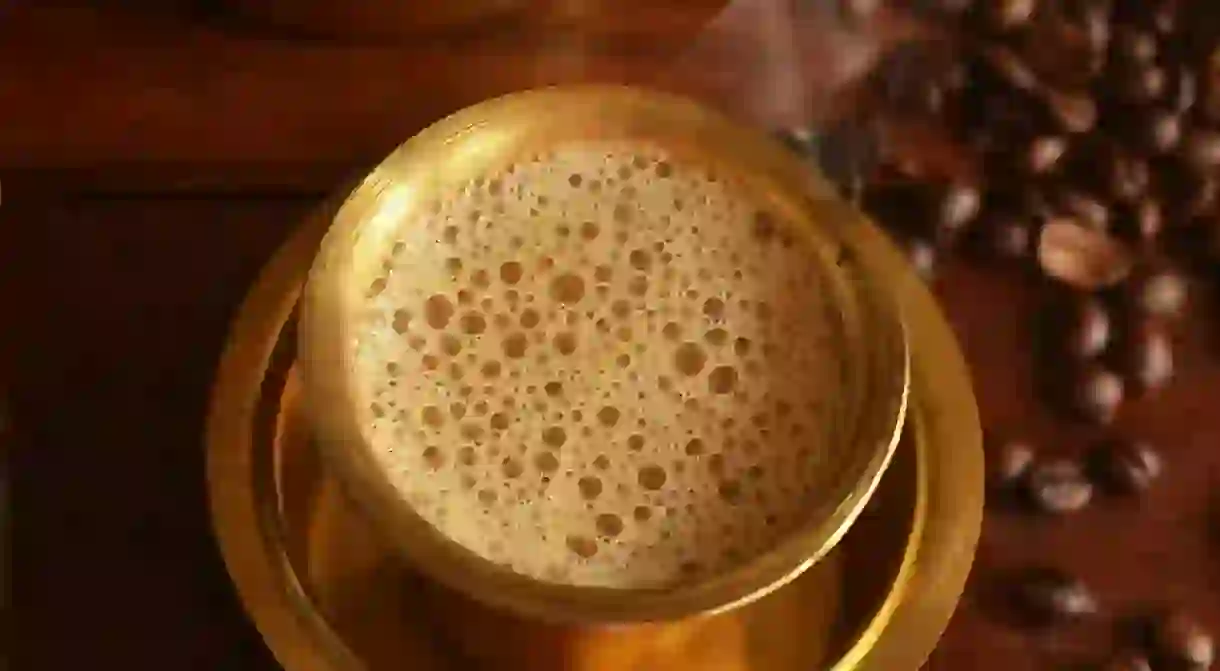A Brief History of South Indian Filter Coffee

For a lot of Indians, there are few caffeinated beverages that prove as potent and satiating as a cup of good old filter coffee. Brewed extra strong with plenty of sweetened milk and served in steel cups that sit atop containers known as dabarah, this local coffee has been fueling parts of South India for centuries now. Keep reading to learn all about South Indian filter coffee.
Coffee comes to India
India’s tryst with coffee is said to have its origins in early 17th century Karnataka. Baba Budan, a Muslim saint from Chikmagalur, is said to have smuggled seven coffee beans from present-day Yemen while returning from Hajj, or a pilgrimage to Mecca. At the time, it was illegal to transport green coffee beans out of the Arabian Peninsula as local coffee producers and traders wanted to preserve their monopoly. However, Baba Budan not only managed to sneak them into India by hiding the beans in his beard but he was also able to plant them in the Chandragiri Hills of the Chikmagalur district, where they soon flourished.

While coffee production continued in the Chandragiri Hills for well over a century afterward, it is estimated to have been mostly restricted to the area. It was only in the 19th century that coffee plantations aimed at exporting the yield. Regardless, by the 20th century, coffee had become immensely popular throughout the southern states of Karnataka, Tamil Nadu, Andhra Pradesh and Kerala.
Surge in popularity
As the British established their rule in India, they also came across South India’s coffee culture and took it upon themselves to commercialize its production. Under these efforts, coffee plantations became ubiquitous throughout the hills of Coorg in southern Karnataka, Wayanad in northern Kerala and other regions. While the yield was mostly exported, a local market was also developing at the time.

At some point in the 19th century, South Indians widely began brewing their coffee with milk and then sweetening it with honey or jaggery. While it became a daily necessity in many southern households by the late 19th century, coffee was still a rarity in the northern half of the country. It was the establishment and spread of the famous Indian Coffee House during the mid-20th century that bridged this divide.

With the advent of coffee houses, earthen pots used to brew and serve coffee were replaced by stainless steel tumblers – which are synonymous with Indian filter coffee to this day. The tumbler consists of two halves that resemble cylindrical cups, onto one of which fresh grounds are loaded and then compressed (much like how it is done with a French press) while the other half collects the brewed coffee.

While its popularity soared across the country over the 20th century, it also migrated outwards – to Malaysia and Singapore. Known as kopi tarik, the drink was introduced by roadside stalls run by Indian migrant communities.













